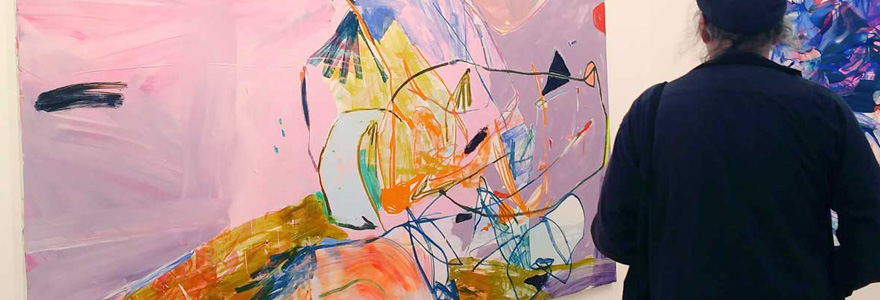Classical art, with its rich history and timeless beauty, continues to inspire and shape contemporary works of art. From ancient Greek sculptures to Renaissance masterpieces, the artistic traditions of the past have left an indelible mark on the creative landscape of today. Artists, seeking to pay homage to the classical aesthetic or reinterpret its themes, draw upon the techniques, symbolism, and philosophical underpinnings of classical art to create meaningful and thought-provoking works. In this article, we will explore the profound influence of classical art on contemporary artistic expressions, tracing the threads of inspiration that connect the past to the present. Through examining specific examples and exploring various artistic movements, we will gain a deeper appreciation for the enduring legacy of classical art in shaping and enriching the contemporary art world. Want to learn more about art? Visit estades.com.
Inspiration from Ancient Greek Sculpture
Ancient Greek sculpture serves as a wellspring of inspiration for contemporary artists, with its emphasis on idealized human forms and expressive gestures. The iconic works of ancient sculptors like Phidias and Praxiteles continue to captivate and influence artists today. The harmony, balance, and anatomical precision found in Greek sculptures often find echoes in modern interpretations. Artists draw upon the timeless beauty and enduring symbolism of figures such as the Discobolus and the Venus de Milo to create their own contemporary explorations of the human form. By incorporating elements of ancient Greek sculpture into their works, artists pay homage to the classical tradition while infusing it with their own unique perspectives, creating a captivating fusion of past and present.
Reviving Renaissance Techniques in Modern Art
The Renaissance era, known for its groundbreaking advancements in art, continues to inspire contemporary artists who seek to revive and reinterpret its techniques. From the meticulous attention to detail and anatomical accuracy to the play of light and shadow, Renaissance artists such as Leonardo da Vinci and Michelangelo set a precedent for technical mastery that resonates with modern creators. Today, artists employ methods like chiaroscuro, sfumato, and perspective to add depth and realism to their works. By studying the works of the Old Masters and incorporating Renaissance techniques into their art, contemporary artists pay tribute to the past while infusing their own artistic visions into their creations. This revival of Renaissance techniques in modern art bridges the gap between the two eras, creating a harmonious blend of tradition and innovation.
The Influence of Baroque Painting on Contemporary Works
Baroque painting, characterized by its dramatic flair, dynamic compositions, and intricate detailing, continues to exert a significant influence on contemporary artists. The works of renowned Baroque painters like Caravaggio and Rembrandt have left an indelible mark on the art world, inspiring a new generation of creators. Contemporary artists often draw upon the emotional intensity, use of light and shadow, and grandeur of Baroque painting to evoke powerful narratives and evoke a sense of awe. The influence of Baroque can be seen in the theatricality of contemporary portraiture, the interplay of light in still-life compositions, and the storytelling aspects of narrative art. By embracing the essence of Baroque painting, modern artists pay homage to this vibrant artistic period while infusing their works with a contemporary sensibility, resulting in captivating and visually striking creations.
Neo-Classical Aesthetics in Modern Sculpture
The principles of Neo-Classical aesthetics, with their emphasis on harmony, idealized beauty, and reverence for classical art forms, continue to find expression in modern sculpture. Inspired by the works of artists such as Antonio Canova and Jean-Baptiste Carpeaux, contemporary sculptors embrace the classical ideals of proportion, balance, and graceful forms. Through the use of marble, bronze, and other traditional sculpting materials, they evoke a sense of timelessness and elegance reminiscent of the Neo-Classical era. The subjects of modern sculptures often draw inspiration from Greek and Roman mythology, portraying gods, goddesses, and heroic figures with a contemporary twist. By integrating Neo-Classical aesthetics into their creations, modern sculptors pay homage to the classical heritage while infusing their sculptures with a contemporary narrative and personal interpretation, resulting in captivating works of art that bridge the gap between the ancient and the modern.
Symbolism and Allegory in Contemporary Art
Symbolism and allegory, techniques deeply rooted in classical art, continue to play a significant role in contemporary artistic expressions. Artists use symbols and allegorical representations to convey complex ideas, emotions, and societal commentaries in their works. Drawing inspiration from the works of artists like Hieronymus Bosch and William Blake, contemporary artists employ symbolic imagery and allegorical narratives to engage viewers on multiple levels. Through the careful selection of objects, colors, and visual metaphors, artists create layered meanings and invite viewers to decipher hidden messages. Symbolism and allegory in contemporary art not only connect the present to the artistic traditions of the past but also serve as powerful tools for expressing universal concepts and sparking meaningful conversations about the human condition.
